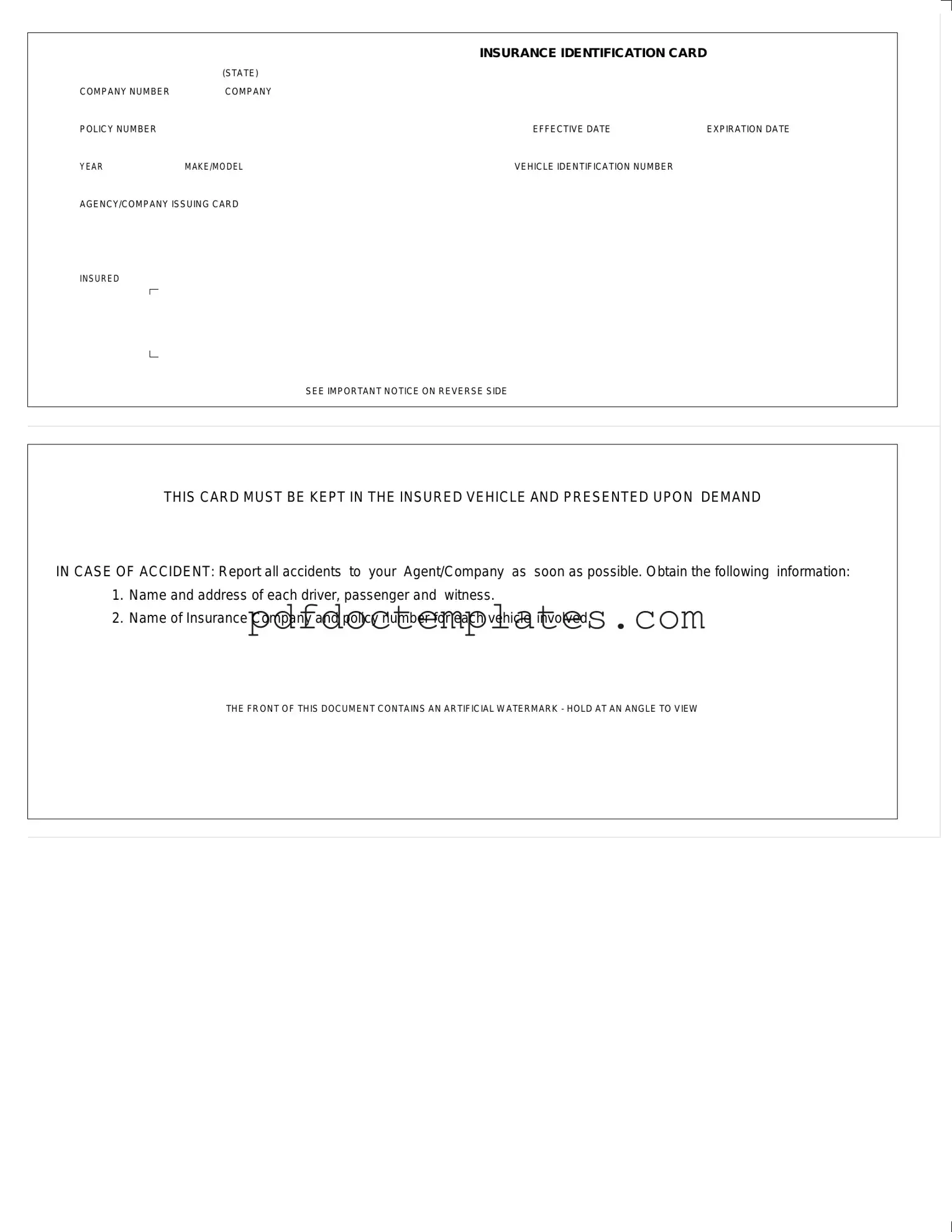Download Auto Insurance Card Template
An Auto Insurance Card is a document that provides proof of insurance coverage for your vehicle. It contains essential information such as your policy number, the effective and expiration dates, and details about your vehicle. Keeping this card in your vehicle is crucial, as it must be presented upon demand in the event of an accident.
To ensure you are properly covered, fill out the Auto Insurance Card form by clicking the button below.
Access Your Document

